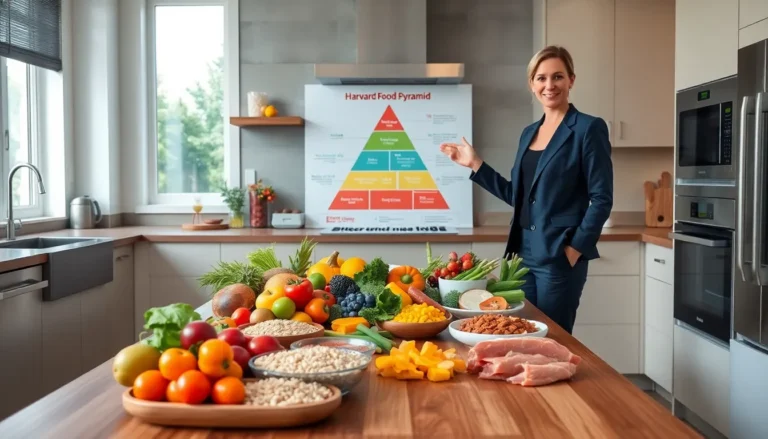Table of Contents
ToggleStruggling to keep your grocery costs from spiraling out of control? You’re not alone. Many families of four find it tough to balance healthy eating with a sensible budget. Let’s face it, one trip to the grocery store can leave your wallet feeling lighter than a feather on a breeze. But don’t worry. With a bit of planning and strategy, you can turn that grocery budget from a bleak reality into a thriving success. So, buckle up: we’re diving into how to eat well without sacrificing your finances.
Understanding Your Grocery Needs

Before diving into the world of budgeting, it’s crucial to understand the grocery needs of a family of four. Everyone in the family has different preferences, and recognizing these not only helps in making smart purchases but also in reducing waste.
- Assess Dietary Requirements: Each person might have specific dietary needs. Are there picky eaters in the family? Understanding who likes what can guide your purchasing decisions, eliminating unnecessary items that will just sit in the fridge.
- Identify Staples: Every household has staple items, those products that are essential and consumed regularly. Think rice, pasta, canned beans, and frozen vegetables. Keeping an inventory helps in knowing what must be restocked.
- Consider Snacking Habits: What snacks does your family typically grab? Families with kids might find themselves buying snacks more often than meals. Plan around these habits to minimize impulse buys and focus instead on healthier options.
Setting a Realistic Grocery Budget
Now that you understand your family’s grocery needs, it’s time to set a budget that actually works. Creating a budget requires a thorough look at your monthly expenses, income, and how much you typically spend on groceries.
- Review Past Expenses: Look at your previous grocery bills to determine your average expenditure. This data would be the foundation of your budget. You may be surprised at how much you actually spend.
- Prioritize Needs Over Wants: A good rule of thumb is to separate wants from needs. Everyone might want those trendy organic snacks, but do they fit the necessity wheel?
- Allocate Extra for Flexibility: Life is unpredictable. Factor in a small cushion in your budget to accommodate unexpected expenses like family gatherings or last-minute meal invites.
By setting a budget based on your real consumption habits, you will not only save money but also headaches.
Smart Shopping Strategies
Smart shopping can make a significant difference in sticking to a budget. Here are a few methods to ensure you’re getting the best bang for your buck:
- Make a List and Stick to It: Before heading to the store, create a shopping list based on your meal plans and family needs. This simple act can prevent impulse buys that rapidly inflate your total.
- Explore Different Stores: Don’t limit yourself to one store. Different grocery chains often have varying prices. While one may have a stellar deal on meat, another could have better prices on produce.
- Use Store Apps: Many grocery stores have apps that offer promotions or digital coupons. Staying ahead of these deals can save you a significant amount each month.
- Buy in Bulk When Practical: If the family consumes certain items frequently, buying in bulk can lead to considerable savings. Just ensure that you have enough storage space.
Meal Planning for Savings
Meal planning is a secret weapon for any family trying to stick to a grocery budget. It allows families to forecast what they need, which eventually saves time and money.
- Theme Nights: Designating specific themes for each night (Taco Tuesday, Pasta Night) can make meal planning easier. Not only does it simplify your shopping list, but it also adds a touch of fun for everyone involved.
- Use Leftovers: Cooking in larger quantities can allow families to use leftovers effectively. This can minimize food waste and save time on future meals.
- Seasonal Ingredients: Incorporating seasonal produce into your meals allows families to eat fresher and cheaper. Plus, it’s a great way to teach children about the seasonality of food.
Utilizing Coupons and Discounts
Coupons can be a family’s best friend. Here’s how to make the most of couponing without feeling overwhelmed:
- Sign Up for Loyalty Programs: Most major grocery stores offer loyalty programs that provide exclusive discounts. Signing up can lead to significant savings over time, and often they send out personalized coupons tailored to your shopping habits.
- Combine Coupons with Sales: The real magic happens when you stack coupons with sale items. This strategic approach can lead to purchasing products at a fraction of their original price.
- Use Digital Coupons: Many grocery stores are moving towards digital coupons. Download their app and keep an eye out for mouth-watering deals.
Staying Within Budget: Tracking Expenses
After setting a budget and shopping smartly, tracking expenses helps ensure you stay on course.
- Keep Receipts: Tracking exactly how much is spent during each grocery visit is crucial. Having a record provides insight into spending habits.
- Use Budgeting Apps: There are numerous apps available that help families keep track of their grocery expenses. These tools can categorize spending, making it easier to visualize where money is going.
- Adjust as Necessary: As circumstances change, like a new family member or dietary shift, it’s essential to revisit the budget periodically. Adaptability is key.







